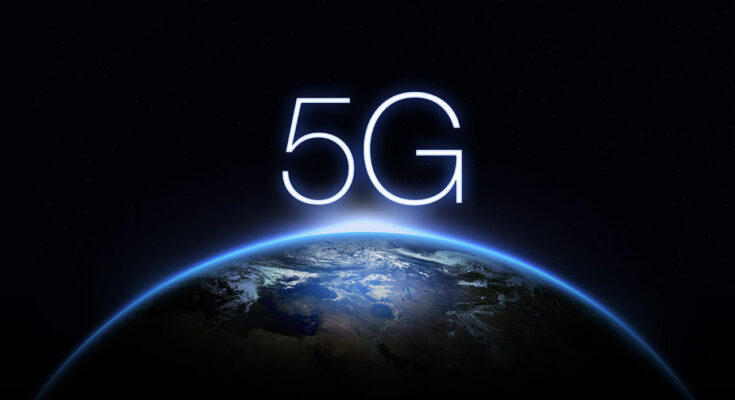1. Introduction to 5G Technology

A. Definition and Overview
5G technology represents the fifth generation of mobile networks, designed to provide faster speeds, lower latency, and the to connect more devices than its predecessors. Crucial features of 5G include:
- Speed: Promises download speeds up to 10 G, significantly outpacing 4G, which averages around 1 Gbps.
- Latency: Reduces response times to as low as 1 millisecond, ideal for real-time applications.
- Capacity: Supports a higher density of devices, enabling seamless connectivity in crowded environments.
This advancement can be contrasted with earlier generations:
- 2G: Focused on basic voice communication.
- 3G: Introduced mobile data for internet browsing and multimedia.
- 4G: Enhanced mobile broadband experiences, particularly for video streaming and online gaming.
B. The Development Journey of 5G

5G technology’s development began in the early 2010s, with the first commercial rollout occurring in 2019. Key milestones include:
- 2012: The International Telecommunication Union (ITU) sets the framework for 5G.
- 2015: Standardization efforts commence, involving various stakeholders in the telecommunications field.
- 2019: Initial commercial services launch across multiple countries, marking the beginning of 5G in everyday use.
Major players in the 5G ecosystem include telecommunications companies, tech giants, and government agencies working collaboratively to shape the future of communication.
C. Importance of 5G in Today’s World

As societies become increasingly interconnected, the role of communication has become paramount. 5G technology is expected to impact various sectors significantly:
- Healthcare: Enhancements in remote patient monitoring and telemedicine.
- Education: Improved online learning experiences through stable connections.
- Manufacturing: Automation and real-time monitoring of production lines.
The implications of 5G stretch beyond communication, influencing economic growth and innovation.
2. Enhanced Connectivity and Network Speed

A. Improved Data Transfer Rates
5G’s data transfer rates mark a substantial improvement over 4G, enhancing streaming, downloading, and overall user experiences:
- Streaming: Users can download full HD movies in seconds instead of minutes.
- Gaming: Online gaming becomes smoother with no significant loading times, providing a competitive edge.
Real-world applications demonstrate 5G’s capabilities, enabling seamless music and video streaming experiences that were previously hindered by bandwidth limitations
B. Lower Latency Levels
Latency, the delay before data transfer begins, is crucial in communication technologies. With 5G, latency is drastically reduced, benefiting various applications:
- Online gaming: Players enjoy real-time interaction without noticeable delays, leading to a more engaging experience.
- Video conferencing: Virtual meetings become more fluid, reducing interruptions and enhancing productivity.
This low latency is essential for applications spanning from entertainment to remote medical surgeries.
C. Increased Device Connectivity
One remarkable feature of 5G is its ability to connect numerous devices per square kilometer, far surpassing 4G:
- IoT Integration: The Internet of Things (IoT) benefits immensely, allowing smart devices—ranging from appliances to sensors—to function efficiently.
- Smart cities: Urban areas harness 5G for traffic management and public safety, leading to more interactive and efficient city planning.
This expanded connectivity supports the growing number of devices in our daily lives.
3. Transformative Applications of 5G in Communication

A. Impact on Mobile Communication
With 5G, mobile communication evolves through enhancements in applications and services:
- Enhanced Services: Applications can provide real-time updates and feedback, improving user engagement.
- Advanced features: Devices could incorporate augmented reality for immersive experiences in various sectors.
The future of mobile devices will likely include innovative features leveraging 5G’s capabilities.
B. Facilitation of Remote Work and Learning
5G significantly supports virtual collaboration tools, transforming remote work and educational methods:
- Collaboration Tools: 5G significantly supports virtual collaboration tools, transforming remote work and educational methods:
- Educational Improvements: Students experience better online learning through higher quality video streams and interactive coursework.
The shift towards remote operations has been accelerated by 5G, offering seamless workflows.
C. Smart Cities and Infrastructure
5G is integral to urban planning, shaping smart technologies and infrastructures:
- Case Studies: Cities like Seoul and Barcelona showcase successful 5G integration, using technology for traffic management, energy efficiency, and public safety.
- Future planning: Urban areas are increasingly leveraging smart solutions to improve liveability and sustainability.
This ongoing integration plays a crucial role in developing efficient and responsive urban environments.
4. Challenges and Considerations in 5G Adoption

A. Infrastructure Requirements
5G necessitates significant infrastructure investment, with several challenges arising
- Deployment Costs: Setting up necessary antennas and equipment is expensive and requires careful planning.
- Logistical Delays:The rollout demands synchronization among numerous stakeholders, potentially delaying access.
Understanding these needs is vital for future expansions in various regions.
B. Privacy and security issues
With increased connectivity, the risks to privacy and security also grow:
- Potential Risks: Cyber threats may become more sophisticated as accessibility rises.
- Best Practices: Companies must adopt stringent security measures to protect user data and maintain integrity within networks.
Addressing these challenges is crucial for establishing user trust in 5G services.
C. Digital Divide and Accessibility
The gap in 5G adoption creates potential disparities among different regions:
- Regional Differences: Urban areas may advance faster than rural regions in accessing 5G.
- Equitable Access Efforts: Various organizations and governments are working towards ensuring that 5G benefits are available to all segments of society.
Commitment to addressing these divides is essential for wider societal growth.
5. The Future of Communication Beyond 5G
A. Evolution of Network Technologies
Speculating on future network generations reveals exciting possibilities beyond 5G:
- Next Generations: Innovations may further reduce latency and expand connectivity, enabling more complex applications.
- Foundation for Progress: 5G sets a solid groundwork for future advancements and technologies.
Understanding these trends helps stakeholders prepare for upcoming challenges and opportunities.
B. Impact on Global Communication Trends
5G will reshape interpersonal communication and international business:
- Changing Landscape: Enhanced global connectivity is likely to affect how individuals and corporations communicate.
- Influence on Collaboration: International businesses will benefit from improved real-time interactions, fostering collaboration across borders.
Businesses and consumers alike will feel the shift in communication dynamics.
C. The Role of Government and Policy
Governments play a crucial role in shaping the 5G landscape through policy:
- Regulations: Proper policies are essential for ensuring safe and equitable use of 5G.
- Global Cooperation: Efforts to standardize communication protocols are critical for facilitating cross-border collaborations.
Effective governance will contribute to a stable 5G ecosystem.
6. Conclusion
The transformative impact of 5G technology on communication cannot be understated. As it enhances connectivity and fosters innovative applications, 5G has the potential to reshape our communication models profoundly. Looking ahead, continued advancements promise further developments in this vital field.



